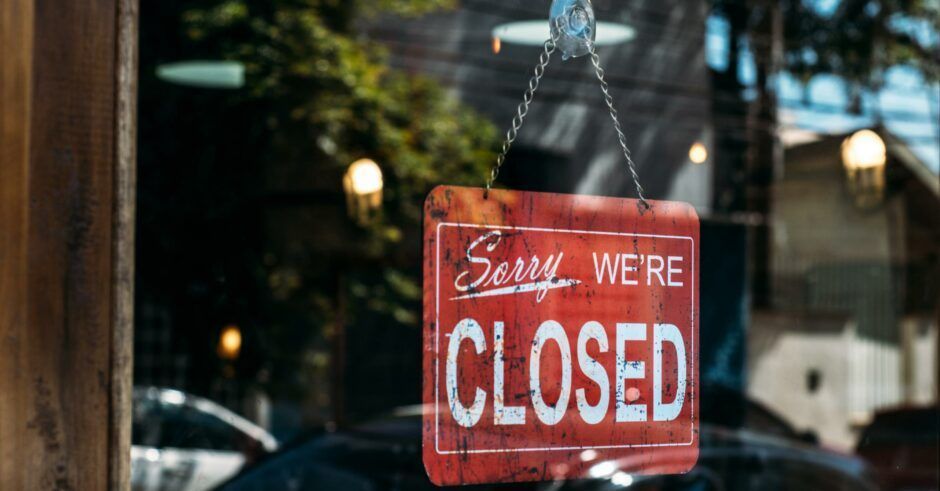The High-street is going through a tough period. We are moving from an analogue world to a digital world. If you sell clothes, food or other commodity products on the high-street and you are being threatened by the digital world, what can you do?
1) Don’t try to be a better Amazon
It is tempting to go and copy the new model that is successful and as such focus heavily on e-commerce and creating lots of digital store offerings. Unfortunately, Amazon has decades of a head start in a market where network effect makes it a winner takes most outcome. It will be impossible to sell online more, faster and cheaper than Amazon. Making a second-best copy will not work because customers are literally seconds away from comparing with number 1.
2) Learn from Kodak vs Fujifilm
Both Kodak and Fujifilm suffered the same digital camera disruption to their core business. One failed, another grew. Fujifilm did not focus on copying digital cameras and trying to win the race to the bottom. They analysed what unique skills they had and refocused them on creating new business lines and products that were based on their core skills but in other markets.
3) Focus on the company’s core skills and add innovation to the mix
Many leading large clothing and food high-street shops have prime real estate, many helpful staff, a great brand, great customer service, a wide logistics capability,…
How can these advantages be put to new use? In a world where any product can be looked up in seconds and same day delivered to your home, going after commoditized clothing and food is a low margin business in decline. Too many store visits end up in a quick price comparison on Amazon and getting a prime delivery for less.
Clothing can be bought online but you never know if it fits, how it feels, how it looks on you. What if the high-street would provide anybody designer branded, tailor-made inexpensive clothing? Sounds impossible? What if you walk into the store and go to the Fashion Design department and have yourself measured? You basically stand in a similar full-body scanner as used in airports. You can now go to a magic mirror and get assistance from a personal shopper (i.e. one of the many existing staff). The customer can see themselves in this magic mirror wearing different types of clothing. This is called augmented reality and already exists. The personal shopper can show different types of fabrics and physical samples so the customer can be convinced the new shirt, skirt or suit they are trying is really what they want. Additionally, designs can be provided from a large catalogue of professional and amateur clothing designers who get a commission if their design is chosen. A sort of uberised clothing designers. The customer can combine different designs and can be helped in personalizing their new cloths via embedding initials, personal photos, custom text or other details. Artificial intelligence can help with recommendations and bringing compatible design choices to the magic mirror. As soon as the customer is done they pay. The clothes are now produced either in-store or nearby by robot factories that can create personalised clothing at a fraction of the cost of what the traditional mass production, ship to the other side of the world, throw away excessive stock model costs. Once the customer has been measured, and unless they gain or lose substantial weight or are still growing, customers can order both in-store and online other personalised clothing at a fraction of the time. Drones or robots can deliver the clothes to your home.
Another part of the store can be a series of individual mini-stores, owned, rented to other companies or working on a revenue share basis when working with start-ups, in which other personalised products are sold. This can be designers that help design personalised furniture, decorations, gifts, jewels,… 3D printers and CRC machines can do a lot of magic. Forget mass production. Focus on cost-effective personalised solutions. People want personalised solutions that are inexpensive and need experts to help them with, at least the first time.
A third part of the store can be about lifestyle and experiences. Need help planning a healthy diet and getting personalised food ingredients and recipes delivered every day via a subscription? Need help organising a wedding, a birthday, a funeral, …? Learn how to cook with a Thermomix? Define your personal taste for Nespresso, Tea, soft drinks, and get regular deliveries of personalised products, e.g. Nespresso caps with your family faces printed on, Coca Cola with the extra personalised flavours and your name on the bottle,…
In summary, convert the high-street into highly personalised shopping experiences. Having lots of stores and personnel will be an asset that is difficult to copy by online-only competitors.
All the above ideas, can or cannot work. That is why an innovation mentality has to be introduced whereby small teams of employees and suppliers get the opportunity to setup mini businesses within the existing commercial centres. Some work, several will not. Lots of suppliers can be paid commission, e.g. magic mirrors and robot clothing can be paid per item sold or produced. If you don’t spend a lot of money on trying each idea and you continuously try new ideas, you should find a new set of high margin personalised businesses which require initial human contact before they can digitally scale. Customers should every week be surprised by yet another new set of ventures, so they come back.
What personalised product would you buy?





